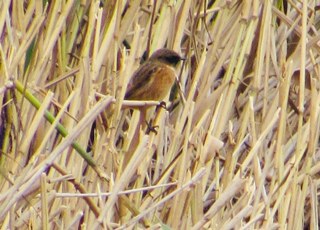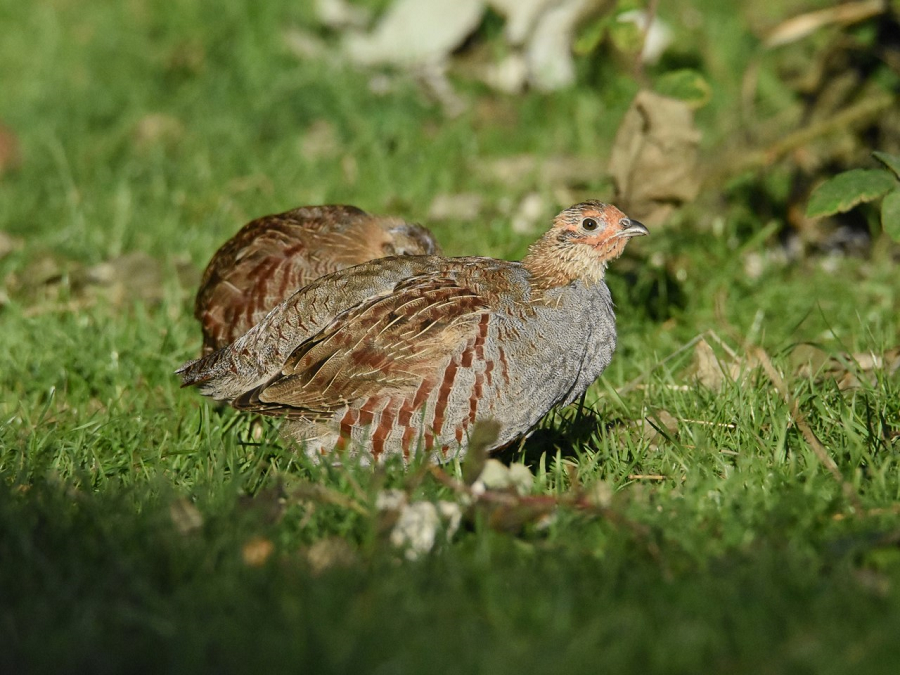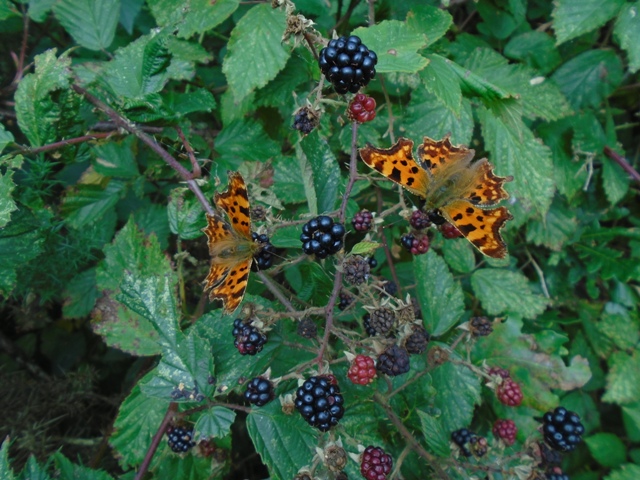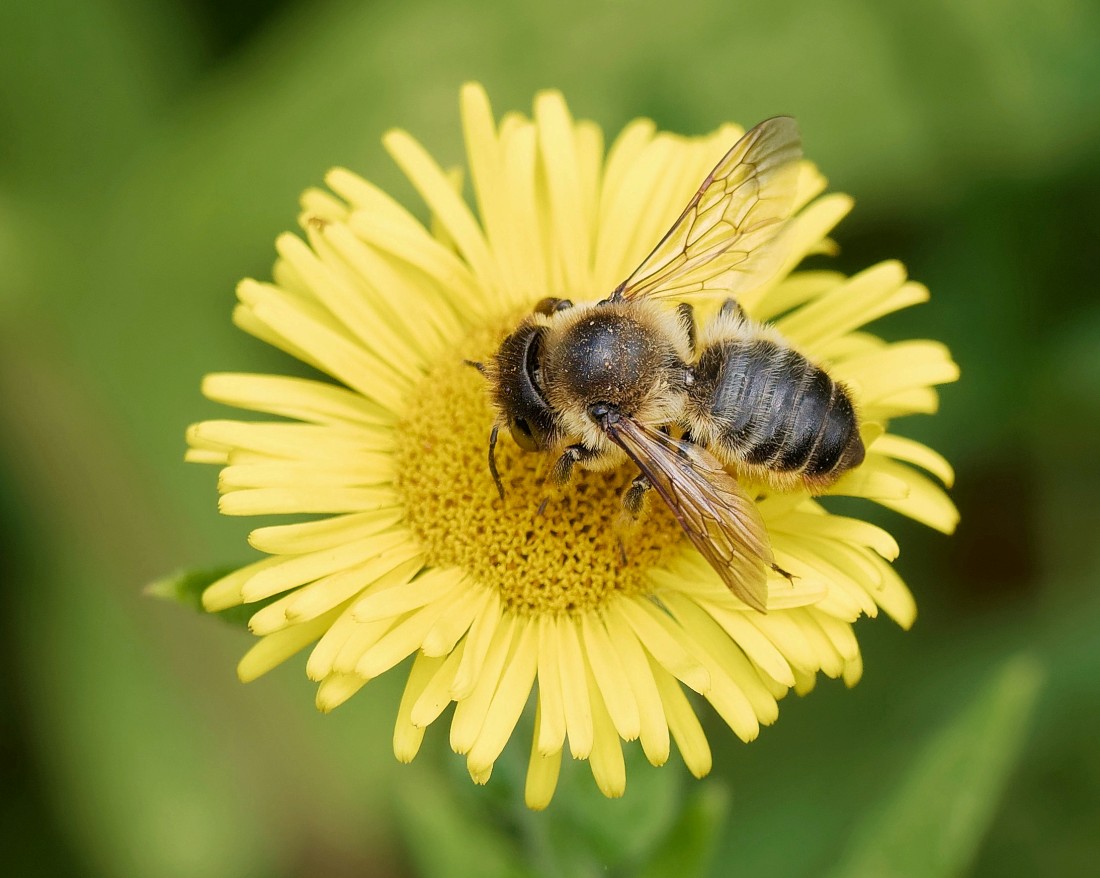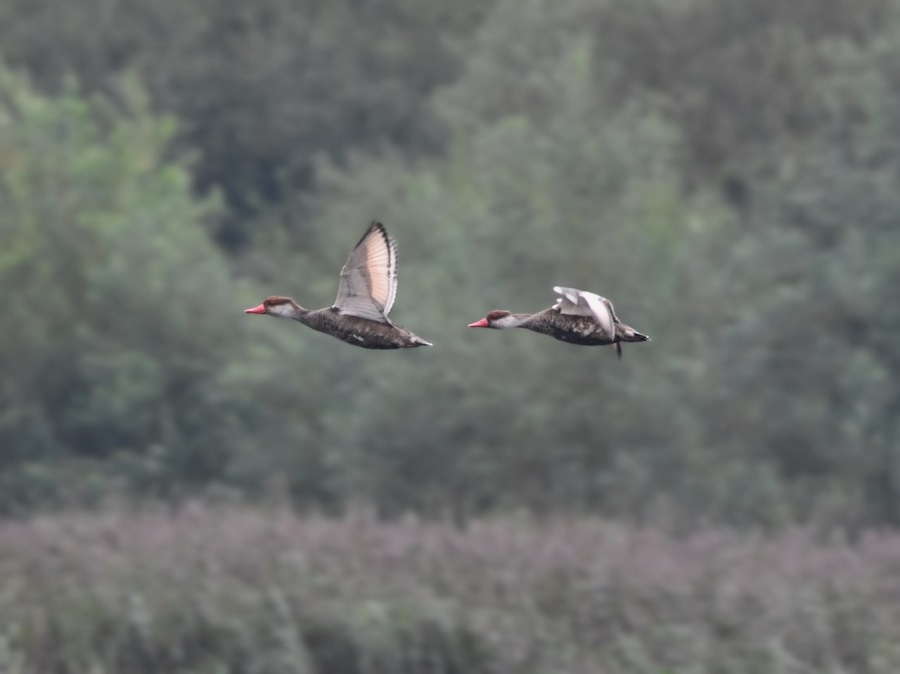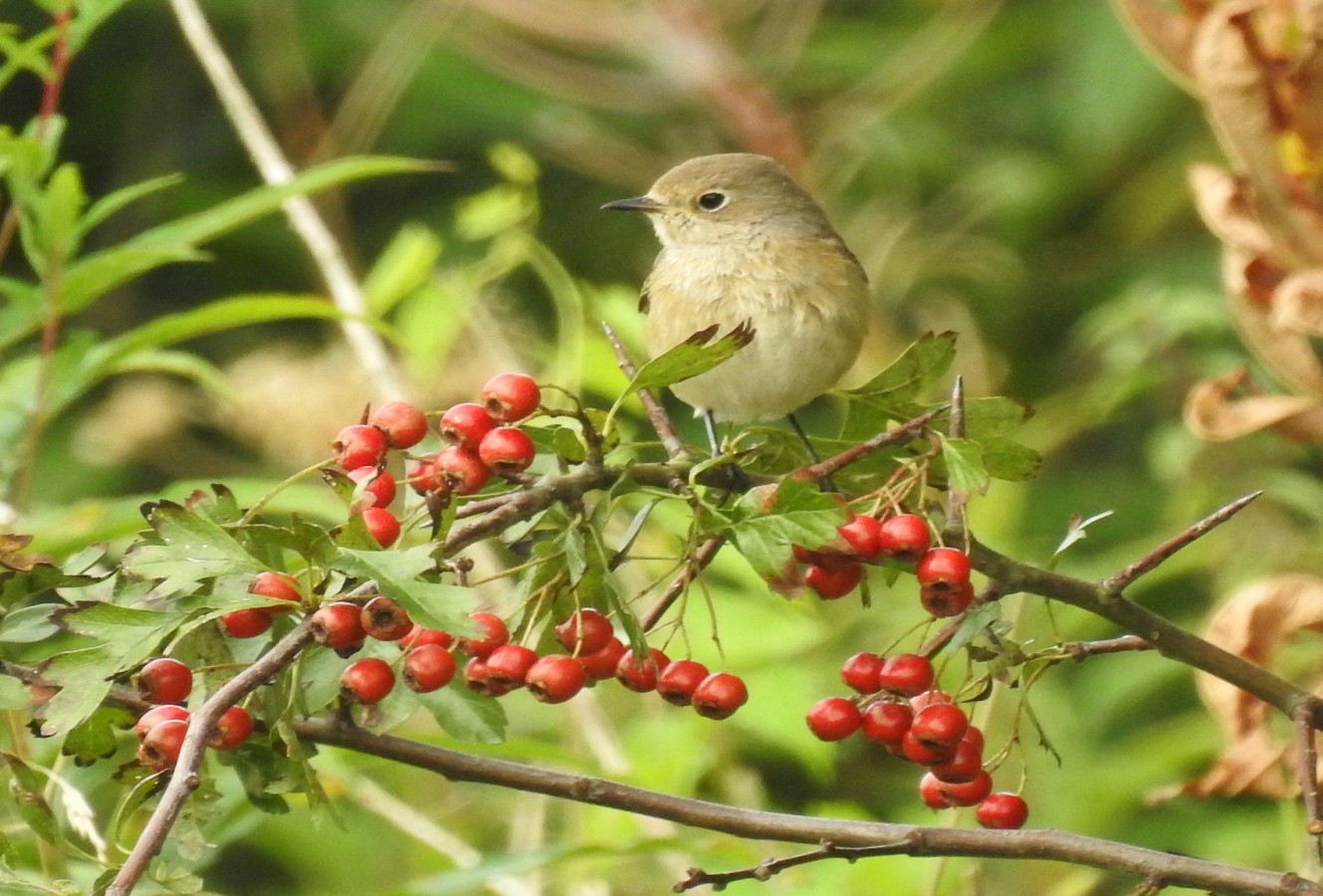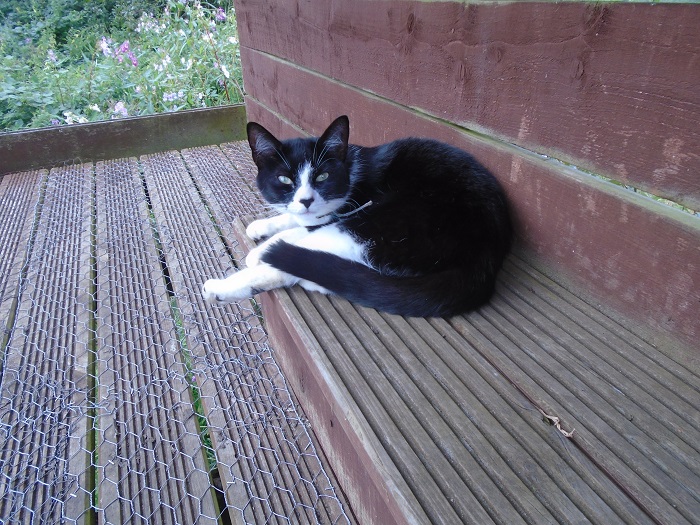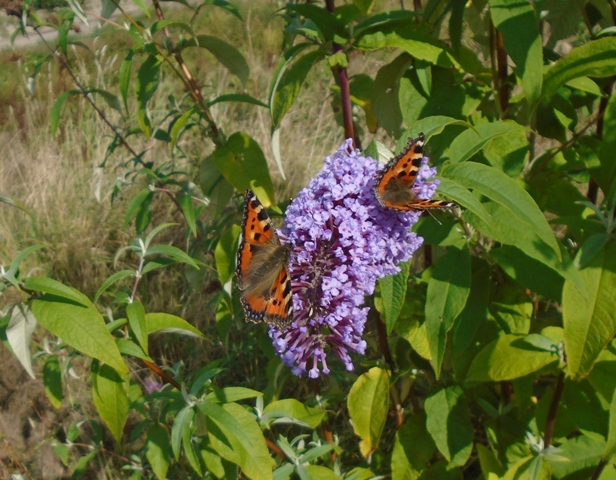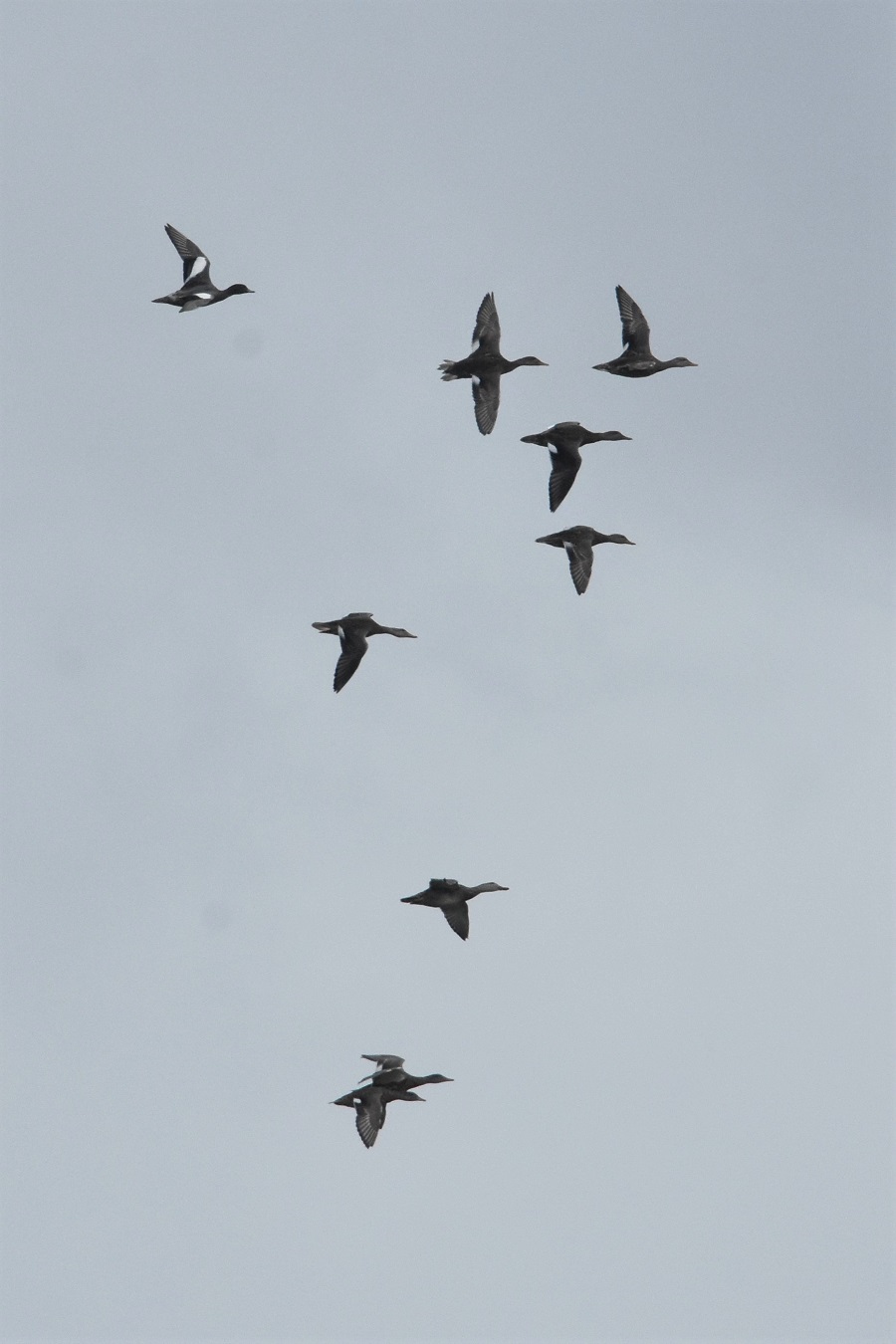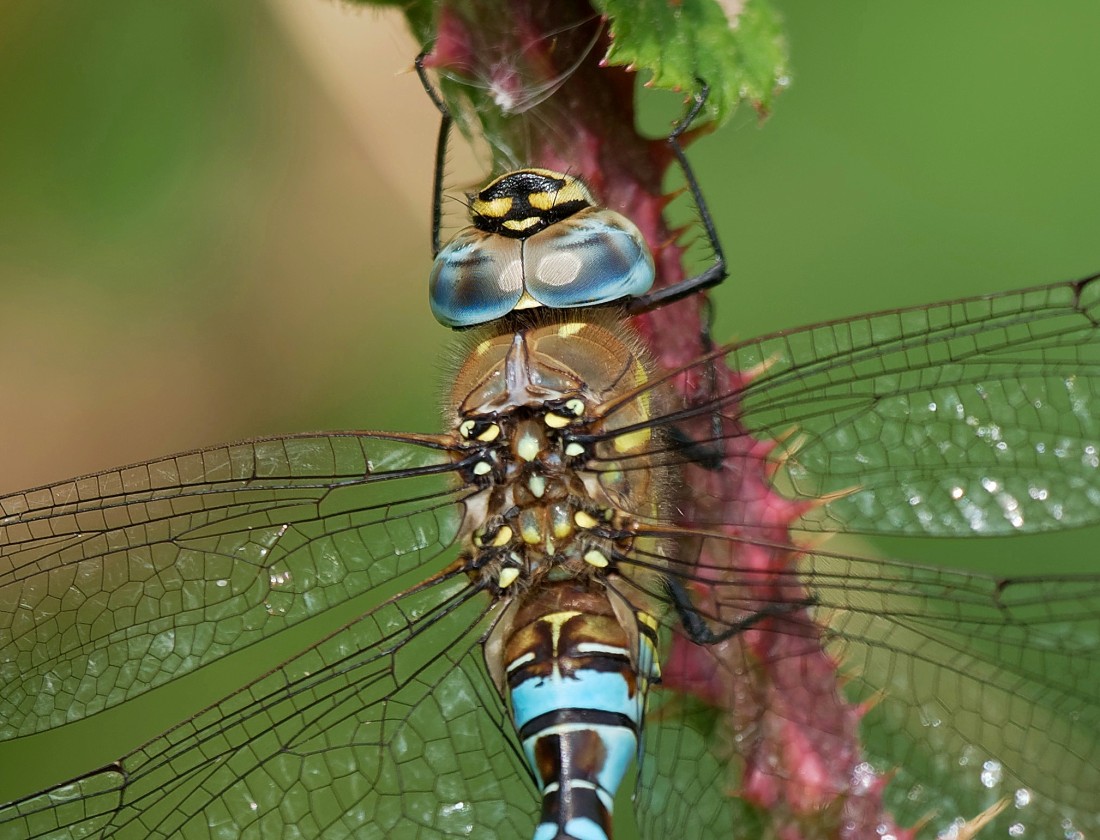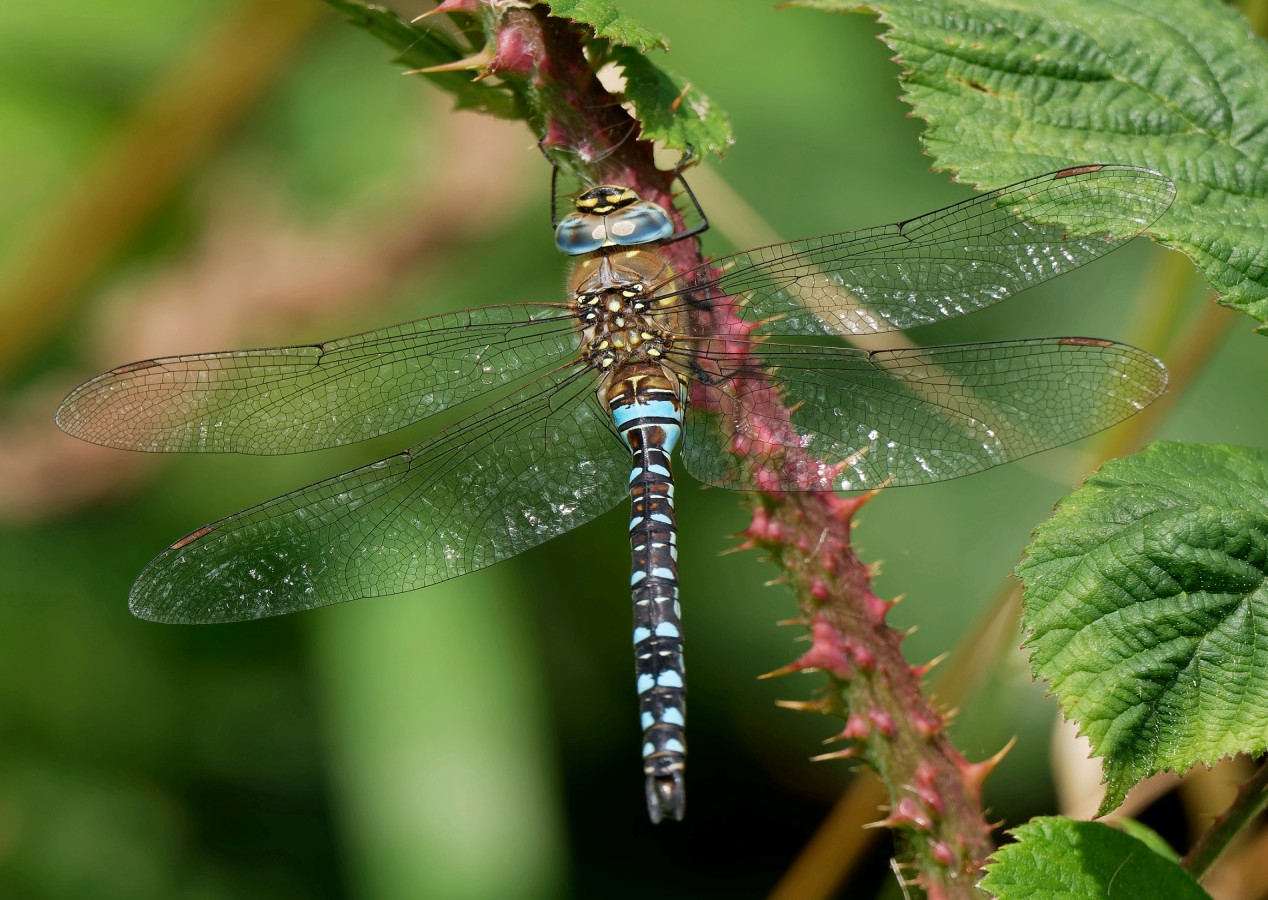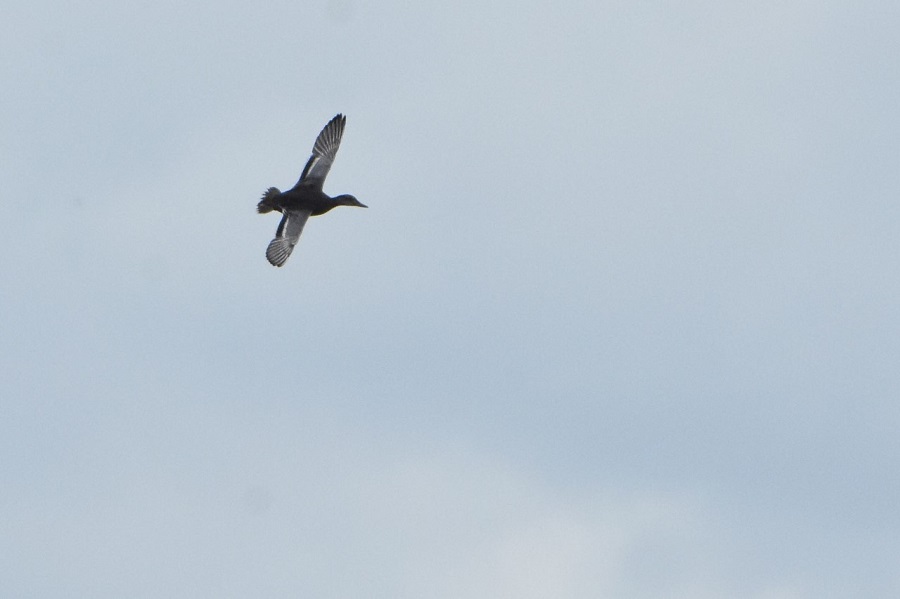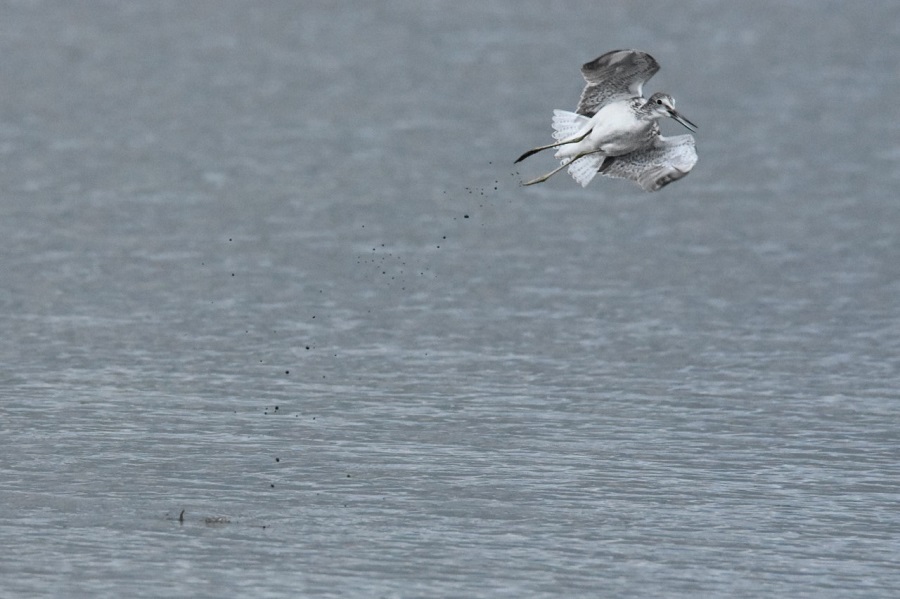Woolston Eyes Monthly Sightings
2019-09-27
A nice record today in the form of a 1st year Black Tern that dropped onto No.3 bed during one of the (many!) heavy rain showers. It stayed and fed for just 10 minutes before departing high to the SE. It represents just the 3rd autumn record of this species, the others being in 1988 & 2010.
Also today a pair of Stonechat still about, this time showing in front of the tower hide. A single Hobby, a few Meadow Pipits and Grey Wags passing over first thing, decent numbers of Chiffchaff and Goldcrest in the bushes, a single Wigeon with ever increasing numbers of Teal, Green Sandpiper and a Black-tailed Godwit.
Submitted by: Daniel Gornall
2019-09-26
One of two Stonechat feeding in the newly cut channel through the reedbed today. Viewable from south screen. Pic taken by Huw Jones whilst we were out working in the reeds. Also today 2 Hobby, a single Swallow, and a few House Martins and Meadow Pipits going over.
Submitted by: Daniel Gornall
2019-09-18
A cool start this morning and the sun was slow to emerge. A Peregrine was on the viaduct and flocks of 76 Greylag and 44 Canada Geese were on the canal. A Nuthatch was calling on Butchersfield Tip. A single Green Sandpiper was seen from the John Morgan Hide. When the sun finally appeared I was able to survey the butterfly transect where no less than 13 Commas were present. 7 Red Admirals were on the Buddleias on the south bank of No.3 bed together with a single Green-veined White. Photo; Commas on brambles on the canal track.
Submitted by: Dave Hackett
2019-09-16
Wildfowl count 14/09/2019 Little Grebe 15,Great crested Grebe 7, Cormorant 28, Heron 7, Mute Swan 26, Shelduck 1, Gadwall 129, Teal 103, Mallard 65, Shoveler 87, Pochard 1, Tufted Duck 22,Water Rail 4,Moorhen 21, Coot 60, Kingfisher 2, Lapwing 50, Black-tailed Godwit 3, Snipe 15, Green Sandpiper 1, Black-headed Gull 42, Lesser Black-backed Gull 2.
Submitted by: Brian Martin
2019-09-12
Light southerly winds at this time of year are often conducive to visible migration at Woolston Eyes, so we were feeling hopeful this morning. As it turned out, there was enough movement over No.3 bed to keep us interested, with highlights of: a Merlin chasing a Swallow southwards, a Hobby following behind soon after, five Meadow Pipits and four Grey Wagtails passing over along with two late Swifts, 45 House Martins and 32 Swallows. Of the resident birds, three Cetti’s Warblers, four Water Rails, a Kingfisher, two Willow Tits, two Peregrines, five Buzzards and three Sparrowhawks were the pick of the bunch. Waders included three Black-tailed Godwits and eight Snipe. Wildfowl numbers were good, too, with 100 Gadwall, 80 Teal and 60 Shoveler. Photo of a Green-veined White Cheers David Bowman (with David Spencer, Daniel Owen and Sue Haddock)
Submitted by: David Bowman
2019-09-10
A pleasant and mostly sunny day for my weekly walk around the reserve. Two Great Black-backed Gulls and a juvenile were at the locks and ten Jackdaws were over Butchersfield Tip. On No.1 bed were a Kestrel and a young Pheasant was flushed. Between the locks and Bollin Point I counted 26 singing Robins. Butterflies included 12 Red Admirals, 8 Commas and singles of Small Copper, Peacock and Large White. A total of 21 Speckled Woods was on the East Bank and Centre Path of No.4 bed. Photo; Small Copper on No.1 bed.
Submitted by: Dave Hackett
2019-09-10
The sunshine brought out a good handful of butterflies and dragonflies today, though it won’t be too long before they’re gone for another year. Totals around No.3 bed included: 6 Red Admirals, 2 Painted Ladies, 3 Small Tortoiseshells, 2 Commas, 1 Speckled Wood, 3 Small Whites, 4 Migrant Hawkers and 3 Southern Hawkers. Small numbers of waders were also present, with 2 Green Sandpipers, 1 Common Sandpiper, 10 Common Snipe, 3 Black-tailed Godwits and a few Lapwings noted. Aerial feeders also trickled through, with 3 Swifts and double- figure counts of Swallow and House Martin. The usual Kingfisher was in front of the Morgan Hide and several Water Rails were calling around the bed. The link is to a short video showing some of the 25 Common Snipe which dropped in to feed in front of the Morgan Hide last week. https://youtu.be/AYqmfF-66_o Photo of a Honeybee Cheers David Bowman (with Daniel Owen)
Submitted by: David Bowman
2019-09-09
pic of the 2 Red-crested Pochards on No3 Bed this morning. Also had a flyover Yellow Wagtail
Submitted by: Daniel Owen
2019-09-08
One of our favourite times of year at Woolston Eyes yesterday, as we set off at dawn to climb to the top of Butchersfield Tip to count the passage of southerly migrants. We made a good start, with an early Merlin whizzing over our heads and then found two grounded migrants which are scarce on the Reserve, a Redstart and a Tree Pipit, both of which posed well. Another good find was an early juvenile Goldeneye on the Mersey below the tip. With an adult having been present in summer, you have to start wondering about possible local breeding. Most satisfying though was the late morning rush of hirundines, with 750 Swallows, 350 House Martins and a single Sand Martin flooding southwards. We also picked up four Swifts heading west and a couple of Ravens among the more common stuff. Photo of today’s Redstart by Dave Steel Cheers David (with Dave Steel, David Spencer, Helen Wynn, Alan Warford and Les Jones)
Submitted by: David Bowman
2019-09-08
Photo of the resident Woolston Eyes cat relaxing on the South Screen Hide!
Submitted by: Dave Hackett
2019-09-08
A survey of No.1 bed this morning produced good numbers of butterflies for early September. Totals were 18 Painted Ladies, 17 Small Tortoiseshells, 5 Common Blues, 17 Whites (probably all Small), 13 Red Admirals, 4 Speckled Woods, 2 Commas, 1 Peacock and 1 Small Copper. Reserve totals for the first week in September were 74 Speckled Woods and 31 Red Admirals.
Submitted by: Dave Hackett
2019-09-06
Drake Wigeon (top left) with a flock of Gadwall. The flock circled No.3 Bed this afternoon before heading off South
Submitted by: Daniel Owen
2019-09-03
A pleasant morning on No.3 bed, with a nice sprinkling of waders. A Little Ringed Plover and a Common Sandpiper were on the Morgan Hide scrape, with two Green Sandpipers and five Black-tailed Godwits out on the mud. The nicest sighting of the morning, though, was of a flock of 25 Common Snipe which dropped in from high to the north-east, with half of them landing to feed on the scrape. A few Swifts and hirundines passed through and Kingfishers, Willow Tits and Water Rails were noted among the more common resident species. Close-up photo of a Migrant Hawker Cheers David Bowman
Submitted by: David Bowman
2019-09-03
Yesterday was sunny day, slowly becoming overcast and drizzly, though there were a some nice sightings on No.3 bed. As I walked on to the bed a Hobby, clutching a Swallow, was soaring over the south bank and a Green Sandpiper and a Little Ringed Plover were feeding out on the mud. From the Morgan Hide another Hobby was successfully hawking for dragonflies, a drake Garganey flew past and a Greenshank was feeding alongside five Black-tailed Godwits and 130 Lapwings, while 10 Snipe also dropped in. As ever, at the moment, Water Rails and Kingfisher posed well and there was a steady trickle of aerial feeders coming and going, totalling: 18 Swifts, 25 House Martins, 16 Swallows and 2 Sand Martins. Meanwhile, No.1 bed, John Blundell added to the day’s variety, reporting a Marsh Harrier, another Hobby and a Green Woodpecker. Photo of a Migrant Hawker Cheers David Bowman (with Daniel Owen and Dan Gornall)
Submitted by: David Bowman
2019-09-02
A fairly quiet day on No.3 but still a few nice sightings about. A juv. Little Ringed Plover landed on the scrape early morning before moving to infront of the South Screen. A juv. Greenshank was also on the bed, and 2 young Hobby gave regular fly-bys as they hunted dragonflies + passing hirundines. The drake Garganey proved more elusive today - much easier to see when in flight
Submitted by: Daniel Owen
2019-09-02
After a bad start to a ringing session on No1 bed, I missed the 3:45 am alarm because the phone was updating itself and arrived almost 1.5 hours late, things did not improve as the new hip and old knees curtailed my contribution apart from recording. Encouraged by Dave Riley it became time to watch rather than do. By the end of the session we had 36 species on the list, the usual common resident tits, thrushes, warblers plus Garden Warbler, 20 Rook, 2 Kingfisher, 4 Jay, 3 Grey Wagtail, 14 Jackdaw, 5 Goldcrest, 14 Cormorant, 67 House Martin, 17 Swallow, 3 Swift, 25 Goldfinch, 21 Lapwing, 27 Stock Dove, 25 Linnet, female Marsh Harrier, juvenile Hobby, Green Woodpecker calling, Sparrowhawk, 4 Buzzard and to finish a single Peregrine. Magical!
Submitted by: John Blundell

